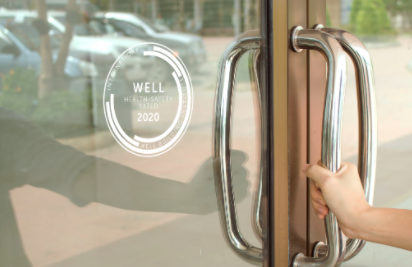Using real estate as a health-care intervention tool is 'an economic win'
When Paul Scialla founded the International WELL Building Institute (IWBI) six years ago, he set out to establish a building standard that integrated human health and wellness into development plans.
He never expected a pandemic would propel that into a worldwide movement.
In the absence of a coronavirus vaccine and coordinated global response to combating COVID-19, IWBI’s WELL Health-Safety Rating has emerged as a key guide to reopening economies safely. From the Empire State Building and Yankee Stadium in New York, to Royal Albert Hall in London and JPMorgan Chase (JPM) branches across the globe, building owners around the world have turned to Scialla’s third party verification standard to prepare for the return of visitors, even as coronavirus infections tick higher.
Speaking to Yahoo Finance at the All Markets Summit: Road to Recovery, Scialla said IWBI has certified “healthy” buildings in more than 60 countries now.
“Unfortunately, this pandemic has been a bit of a catalyst for something that is now becoming very broadly aware in people's minds — the simple fact that what surrounds us matters. What we touch matters. What we breathe matters. How we gather indoors matters. Even the type of lighting we take in through our circadian optic nerve dictates how we'll sleep tonight, how deeply we'll sleep, or our energy levels throughout the day,” Scialla said.
The WELL Health-Safety Rating certifies structures based on five different criteria: cleaning and sanitation procedures, emergency preparedness programs, health service resources, air and water quality management, and stakeholder engagement and communication. New and existing buildings are subject to a third party document review and performance verification, to ensure the structures are within IWBI’s global standards. Those that pass the test receive a health safety seal equipped with a QR code, so guests or visitors can scan the code to see the changes the building has undergone to address health and safety concerns, before they enter.

Scialla said the review process costs “a couple hundred dollars” per building. To date, 1,400 U.S. mayors have signed off on the rating, according to Scialla.
“Basically, if it’s got a front door, it actually can be rated for health and safety protocols,” Scialla said. “The system was built to be able to adapt across multiple locations, and even some cases, thousands and thousands of locations as part of an overall corporate portfolio.”
Scialla expects that seal to increasingly serve as a big “vote of confidence” for office buildings, movie theaters or restaurants struggling to attract people more than seven months after the pandemic began.
While economies have reopened across the country and world, global office occupancy rates remain well below pre-pandemic levels. A recent study by real estate giant Cushman and Wakefield forecast office vacancy to rise from 10.9% pre-crisis to 15.6% in the second quarter of 2022. The firm said global office vacancies will not return to peak levels seen pre-COVID-19 until 2025.
Meanwhile, business closures have continued to increase across the U.S. A recent economic report by Yelp reported that 60% of businesses that temporarily closed in the initial days of the pandemic are now opting to shutter permanently, amid slow sales.
The uncertainty around the virus’s trajectory has helped fuel global growth for IWBI. Scialla says the discussion to establish a WELL seal emerged after industry leaders across sectors reached out to him, in the early days of the pandemic, calling for a global building safety standard. That led to an advisory group, co-chaired by Richard Carmona, former U.S. Surgeon General, and Stacey Rizza, infectious disease specialist and president of the Mayo Clinic staff. The two gathered more than 600 virologists, behavioral scientists, building scientists, and public health experts to develop protocols to open safely, Scialla said.
While the focus remains on the path of the virus and health safety concerns associated with it right now, Scialla says the WELL building standard will have ramifications for businesses beyond the pandemic.
“Over 90% of the ongoing costs of any building are the people inside of it: the salaries, wages, benefits, health care costs, productivity and output, attraction, and retention. The WELL building movement promotes better outcomes for the 90% input of any building,” Scialla said. “Using our real estate as a health-care intervention tool to deliver preventative medical interventions to enhance all of these outcomes, it’s a good blend of both the societal and economic win.”
Akiko Fujita is an anchor and reporter for Yahoo Finance. Follow her on Twitter @AkikoFujita
Former Israeli Prime Minister: President Trump ‘more rhetoric than action’
Coronavirus stimulus: ‘That’s the only way we actually survived’
‘You have to be flexible:’ U.S. startups accelerate hiring abroad in push to distribute workforce

 money
money 

